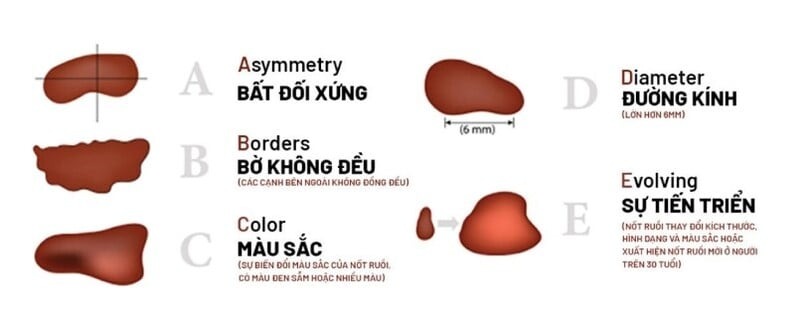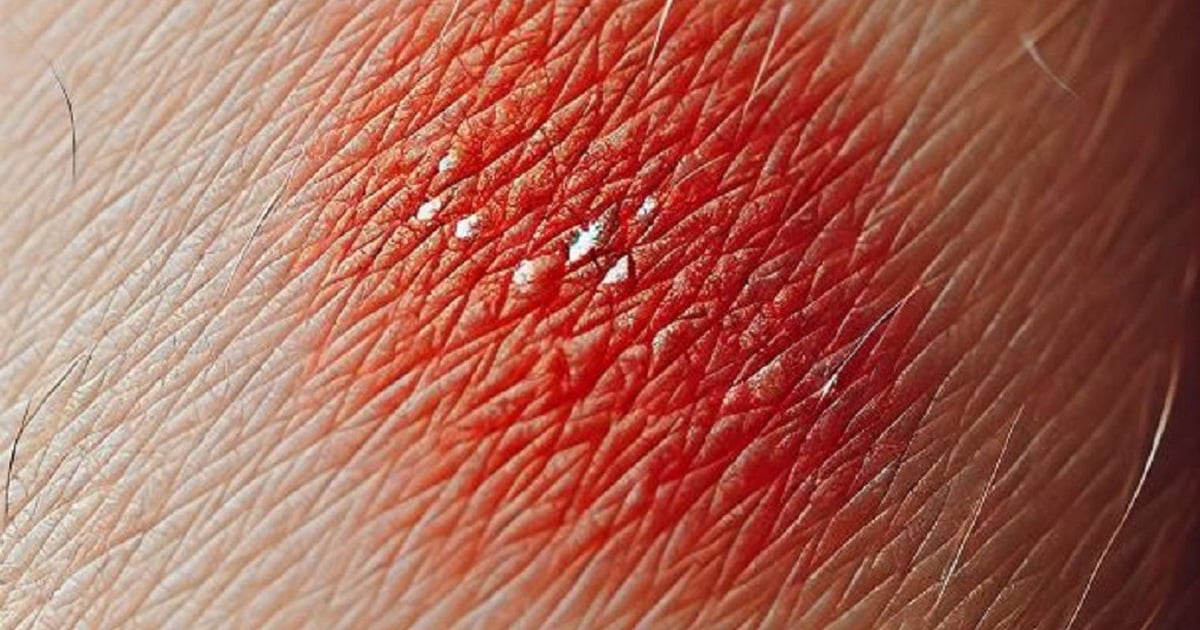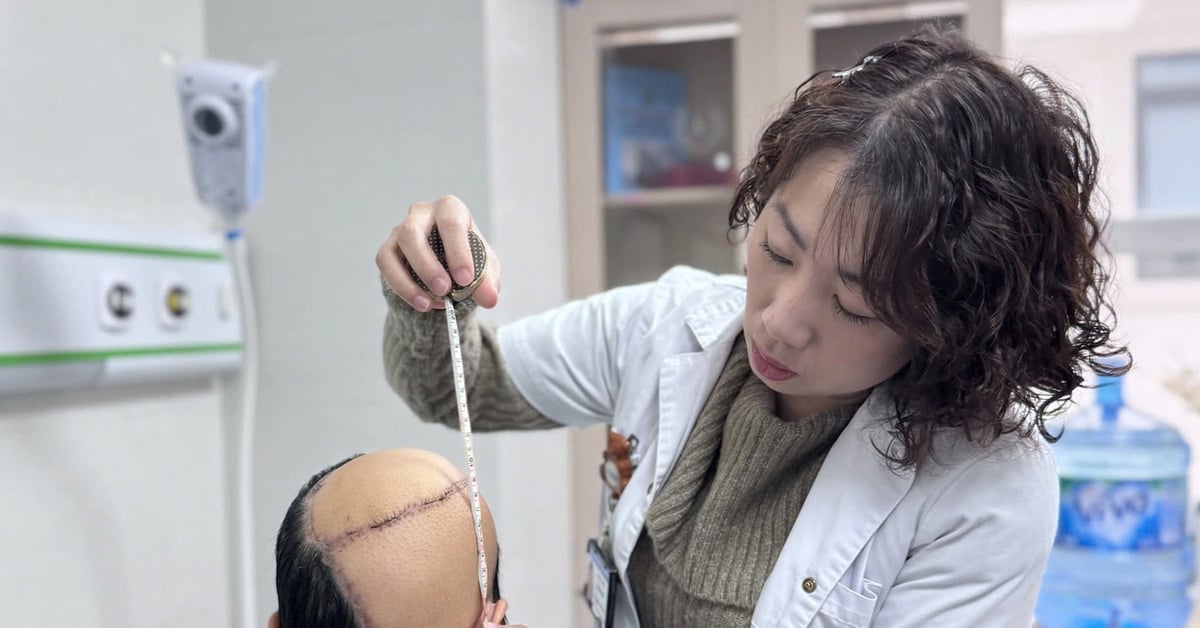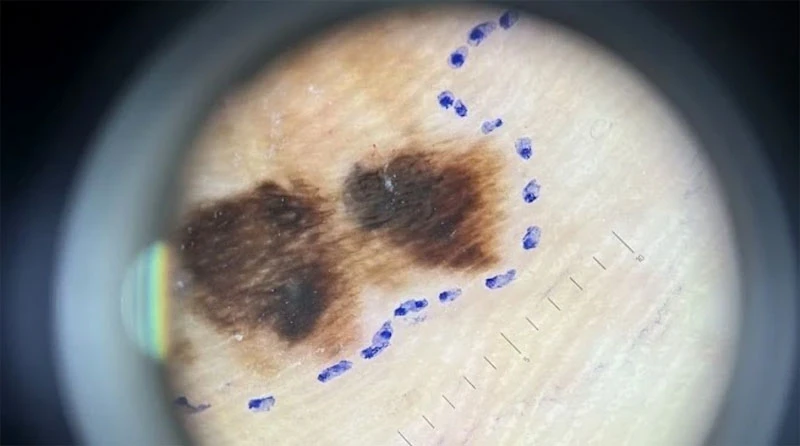Since the beginning of the year, many patients have come to the Central Dermatology Hospital with lesions of dark pigmentation on the feet and hands and have been diagnosed with melanoma and treated.
Patient NVT (born in 1950), thin, came to the clinic with a black spot in the liver area near the right heel.
 |
| The early signs of melanoma can be quite varied. |
The patient said the lesion had been there for many years but because it did not itch, hurt or cause any discomfort, the patient did not pay attention to it.
Over time, this black spot not only did not disappear but also grew larger and changed shape on the skin surface. When the family read articles about skin cancer online, they saw that the signs described were similar to the patient's, so they encouraged the patient to go see a doctor.
At the Central Dermatology Hospital, patients are examined, given blood tests, ultrasounds, and Dermoscopy - a special test in the field of Dermatology that can detect early signs of skin cancer.
The diagnosis results showed that the patient had melanoma in the sole of the right foot. The patient underwent surgery to remove the entire tumor and performed a histopathological examination to accurately determine the extent of invasion and the stage of the disease, thereby creating a timely treatment plan appropriate to the stage of the disease.
Fortunately for the patient, when screening on X-ray, ultrasound and controlling regional lymph nodes during surgery, there were no signs of metastasis.
The patient then underwent wide excision of the lesion, following the standard treatment for melanoma to ensure complete removal of cancer cells, limit recurrence, and skin defects after tumor removal were reconstructed using skin grafting techniques.
Since the beginning of the year, many patients have come to the Central Dermatology Hospital with lesions of dark pigmentation on the feet and hands. We have diagnosed them as melanoma and treated them.
This reflects the problem that people still do not pay attention to dermatological diseases in general and skin cancer in particular.
Melanoma is a malignant disease that develops from melanocytes, which are cells responsible for producing melanin, the pigment that gives skin color. Currently, the incidence of this disease tends to increase.
In 2023, an estimated 97,610 new cases of melanoma will occur in the United States, causing approximately 7,990 deaths.
Statistics from several countries show that the incidence of the disease doubles every 10-15 years and increases with age. The highest incidence was recorded in Australia at 40/100,000 people; in the US at 12/100,000 people and in Vietnam at 0.4/100,000 people.
Melanoma is less common than other types of skin cancer. Although it accounts for only about 1% of skin cancer cases, melanoma is responsible for most skin cancer-related deaths due to its invasive nature and ability to spread rapidly.
Melanoma cells invade and metastasize to other organs by traveling through tissues, blood, and the lymphatic system.
Cancer cells can metastasize to any location in the body, most commonly to the brain, lungs, liver, etc. Although the disease has a high rate of metastasis, if detected early and treated according to the correct regimen, the results are good, with a very high 5-year survival rate.
Melanoma can appear anywhere on the body. However, in Asians it is more common on the palms and soles, accounting for about 50% of cases.
Most of the patients we treat are similar. It starts with an area of hyperpigmentation with uneven color, brown alternating with gray-black, unclear boundaries, no pain, no itching. The lesion spreads to the surrounding area, can ulcerate or appear as raised tumors.
Some authors believe that moles in certain traumatized areas such as the hands, feet, or shaved areas have a high risk of developing into melanoma and recommend early removal of moles in these areas.
In addition, we often encounter subungual melanoma, which is manifested by irregular hyperpigmented lesions that occupy part or all of the nail bed.
Subungual melanoma is often diagnosed late because it is easily confused with other diseases such as subungual moles, traumatic hemorrhage, paronychia, fungal infections, and subungual warts.
Therefore, any subungual hyperpigmentation should be carefully examined, especially those that extend the entire length of the nail.
Most of the disease appears on hyperpigmented lesions in areas of skin that are pressed or rubbed.
Localized malignant tumors often do not affect the patient's health much and are often overlooked.
The early signs of melanoma can be quite varied. In fact, patients can apply the ABCDE rule, which are the early signs of melanoma, to check for unusual lesions on the body.
A (Asymmetry): The mole or hyperpigmented spot is not symmetrical in shape.
B (Border - Lesion border): The lesion border is irregular, jagged or blurred.
C (Color - Color): Color is uneven, can include many different colors such as black, brown and even red or blue.
D (Diameter - Diameter): Diameter greater than 6 mm.
E (Evolving): The lesion changes in size, shape or color over time. If the lesion has one of the following characteristics, you should immediately go to a specialized hospital for examination.
According to statistics from the American Joint Committee on Cancer (AJCC) in 2009, the prognosis of melanoma in situ is generally very good, with a 5-year survival rate of over 90%.
For more invasive tumors, the 5-year survival rate ranges from 50-90% depending on the thickness, skin ulceration, and rate of cell division of the malignant tumor.
When the tumor has metastasized to regional lymph nodes, the 5-year survival rate will decrease significantly, ranging from 20-70%. The 5-year survival rate of melanoma with distant metastasis is about 10%.
This shows the importance of early recognition of unusual signs on the skin and timely examination.
Early diagnosis not only helps improve treatment effectiveness but also increases the chance of survival and reduces the risk of disease metastasis.
Source: https://baodautu.vn/tang-nhanh-luong-benh-nhan-mac-ung-thu-te-bao-hac-to-d221392.html




![[Photo] Prime Minister Pham Minh Chinh chairs the Government's special meeting on law-making in April](https://vstatic.vietnam.vn/vietnam/resource/IMAGE/2025/4/13/8b2071d47adc4c22ac3a9534d12ddc17)



























![[Photo] Closing of the 11th Conference of the 13th Central Committee of the Communist Party of Vietnam](https://vstatic.vietnam.vn/vietnam/resource/IMAGE/2025/4/12/114b57fe6e9b4814a5ddfacf6dfe5b7f)






























































Comment (0)